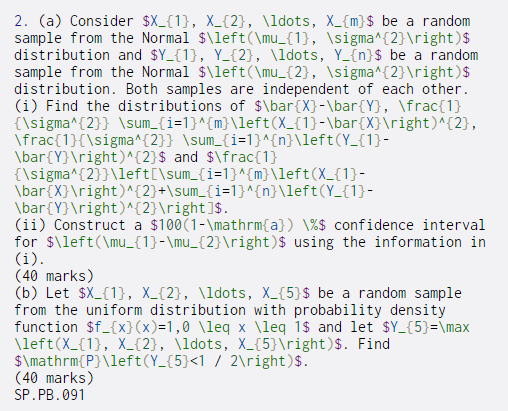Answered step by step
Verified Expert Solution
Question
1 Approved Answer
2. (a) Consider $X_{1}, X_{2}, ldots, X_{m}$ be a random sample from the Normal $left(mu_{1}, sigma^{2} ight) $ distribution and $Y_{1}, Y_{2}, ldots, Y_{n}$ be

Step by Step Solution
There are 3 Steps involved in it
Step: 1

Get Instant Access to Expert-Tailored Solutions
See step-by-step solutions with expert insights and AI powered tools for academic success
Step: 2

Step: 3

Ace Your Homework with AI
Get the answers you need in no time with our AI-driven, step-by-step assistance
Get Started


